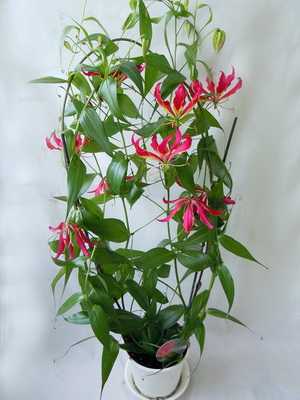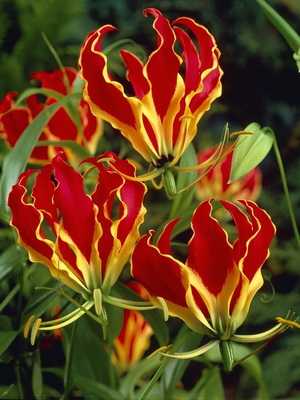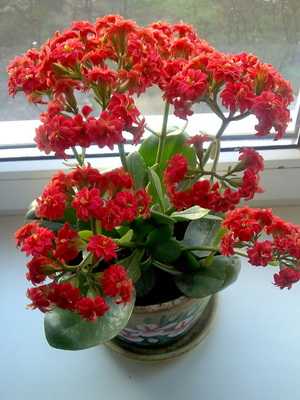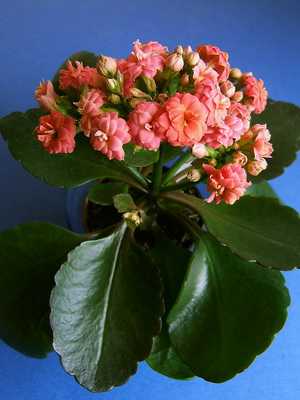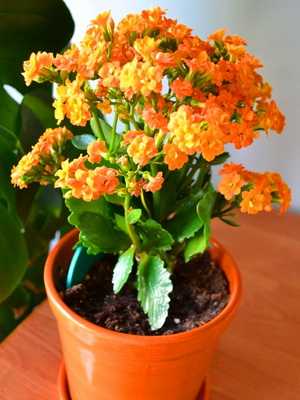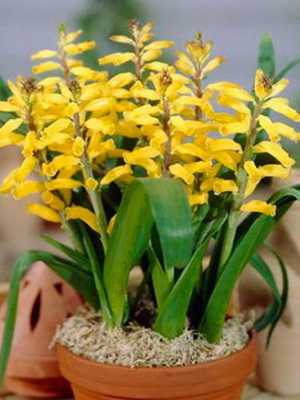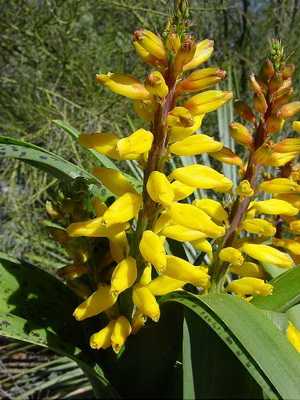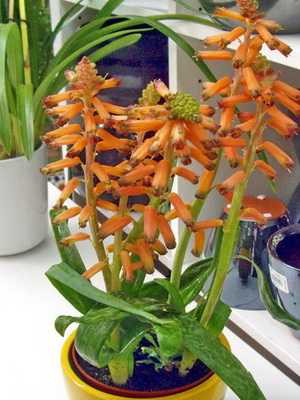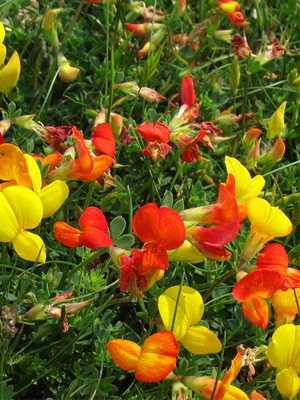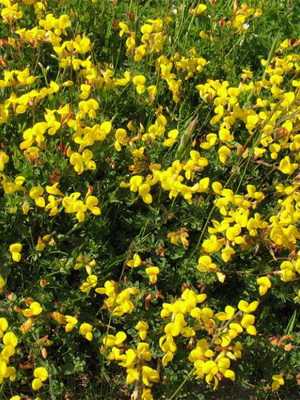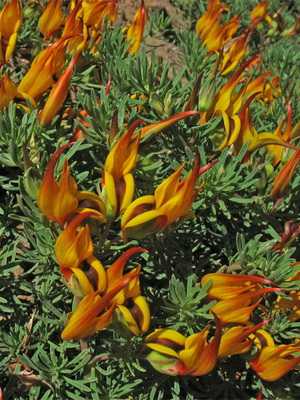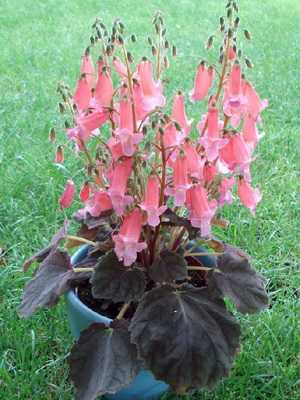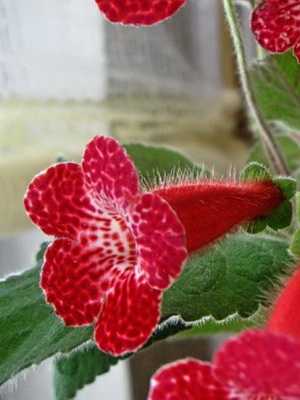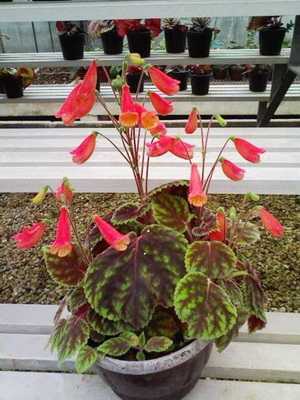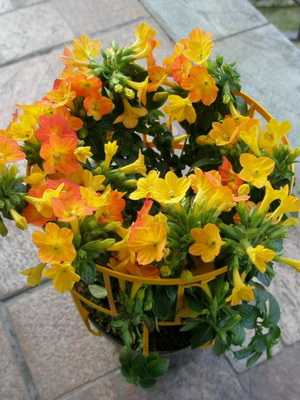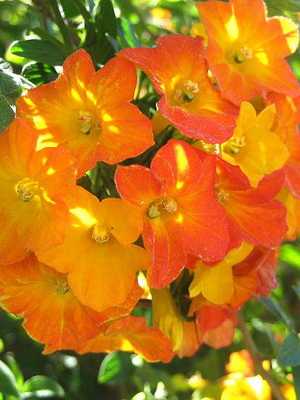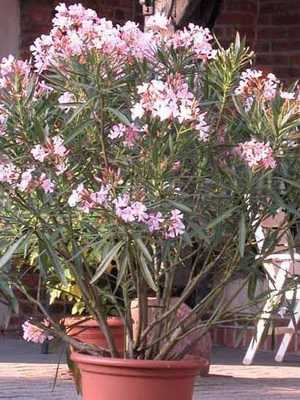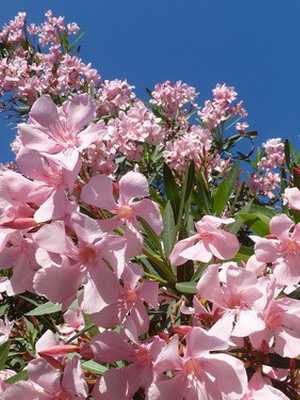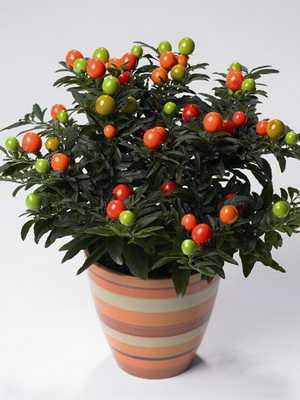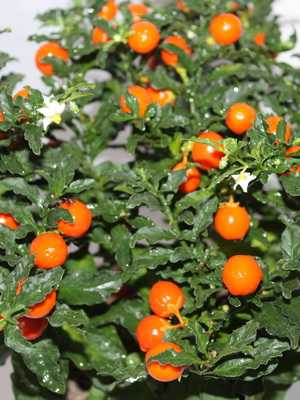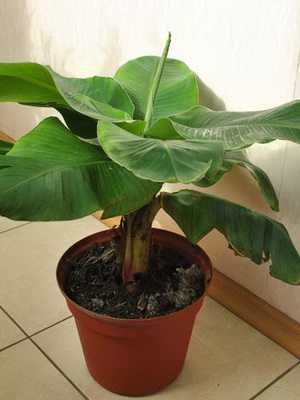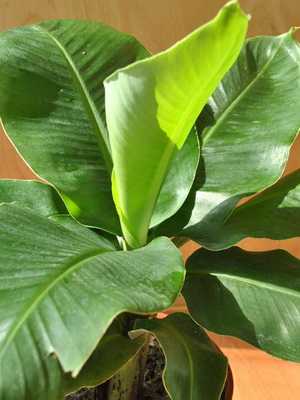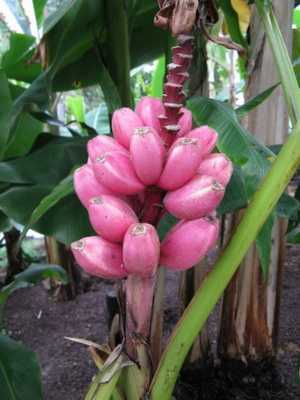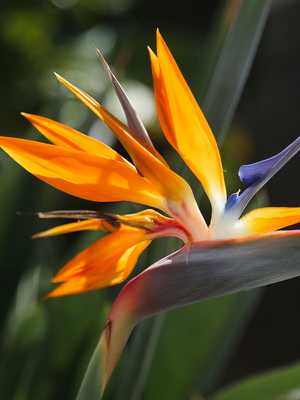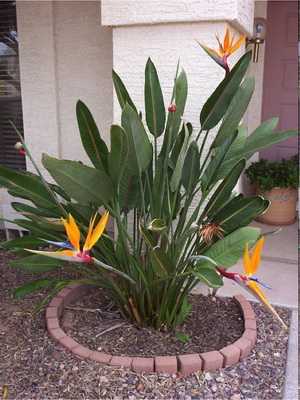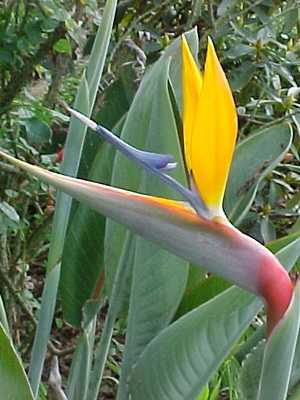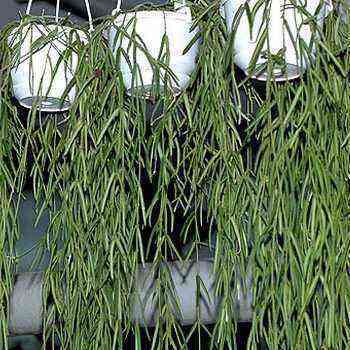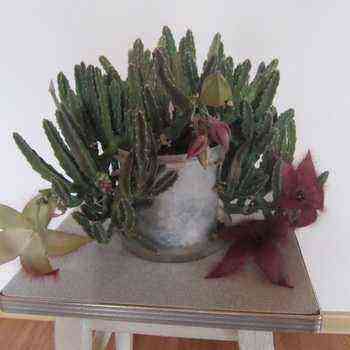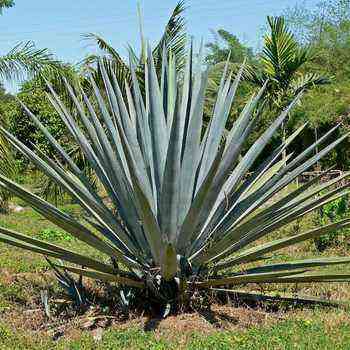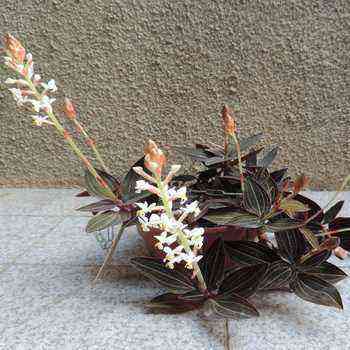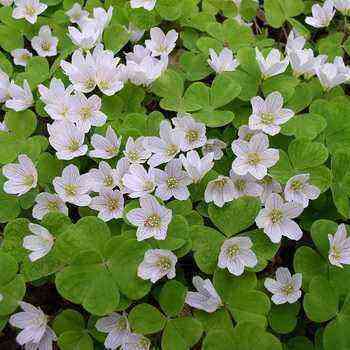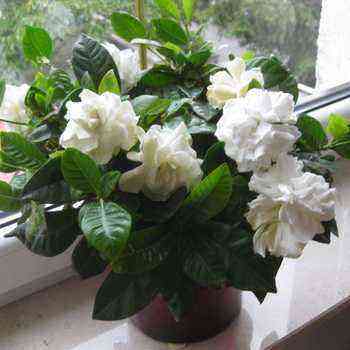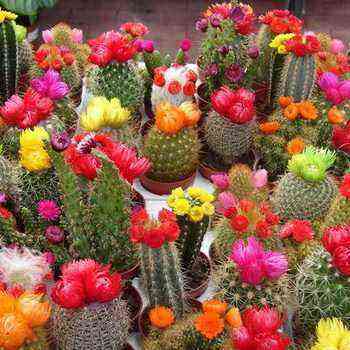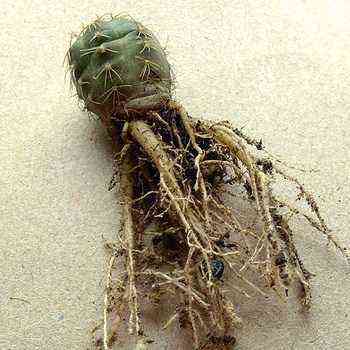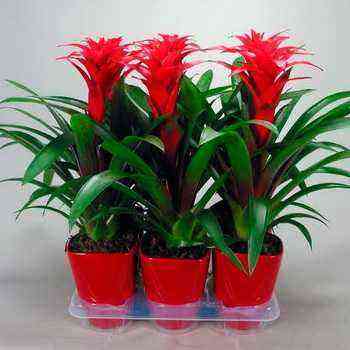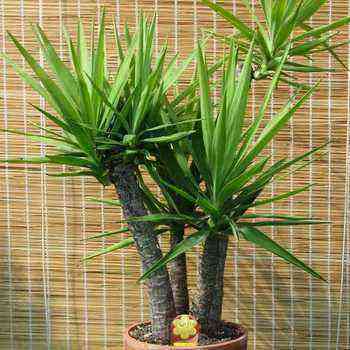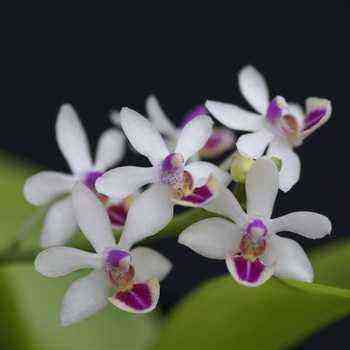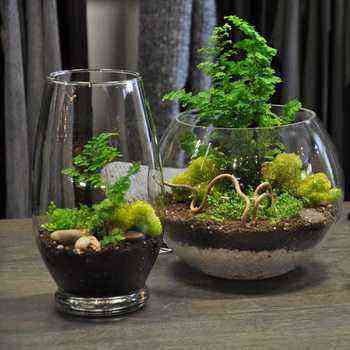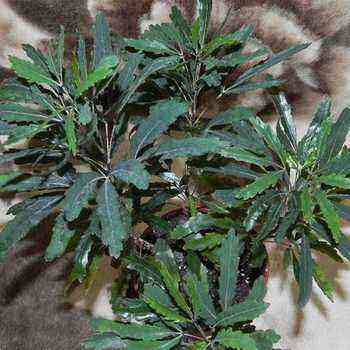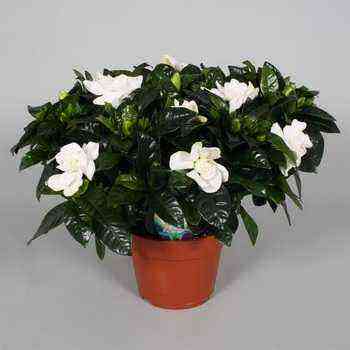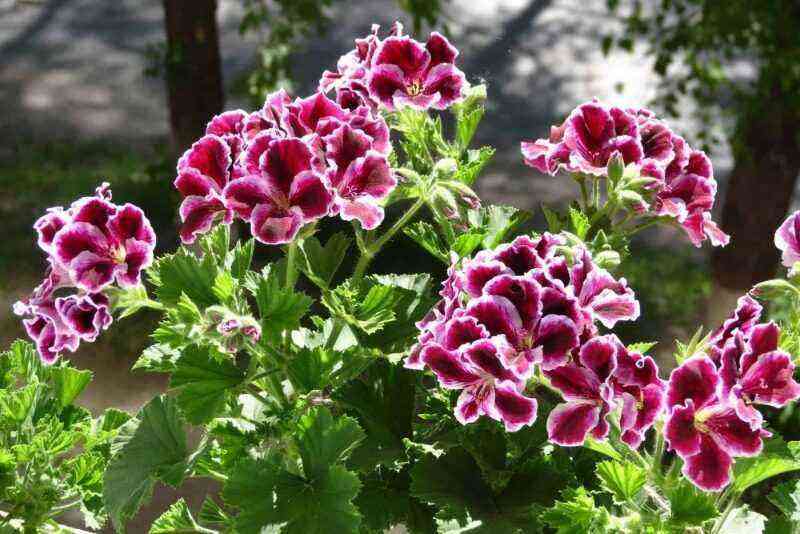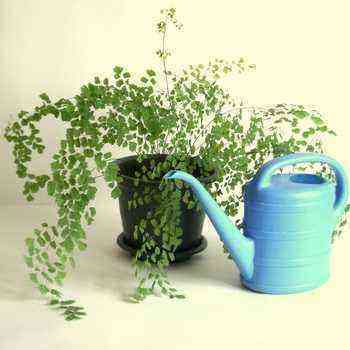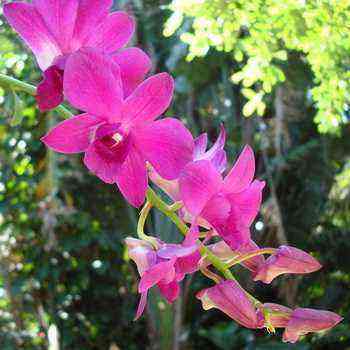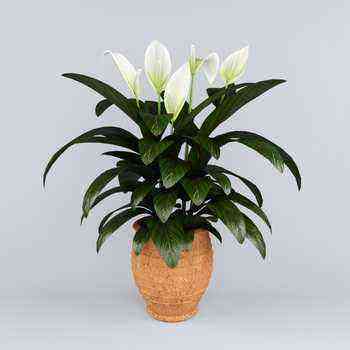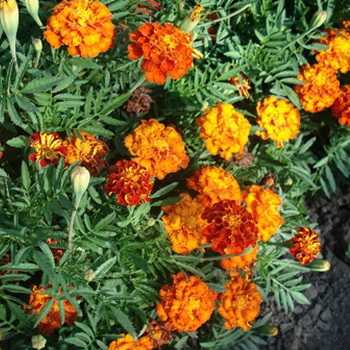
It is for the latter that this article will be useful, in which we bring to your attention a description of plants of bright colors: gloriosa, kalanchoe, lachenalia, lyadvenets, schizanthus, smithianta, streptosolen, nightshade, home banana and strelitzia. You will not only be able to see photos of flowers of red-orange, red-yellow and yellow-orange shades, but also get recommendations for their cultivation.
Red-yellow flowers: gloriosa, kalanchoe, lahenalia, lyadvenets
Gloriosa (GLORIOSA) blooms in mid-summer with large red-yellow flowers. Weak stems are tied to a support. During flowering, keep it in a warm place with good lighting. Gloriosa can be grown at home from a tuber by planting it vertically in a pot in spring, so that its tip is 2,5 cm below the surface. Water sparingly at first, then increase watering as the stems begin to grow.
Gloriosa Rothschild (Gloriosa rothschildiana) grows up to 1 m or more. Its petals, red with a yellow base, are bent back. G. luxurious (G. superba) is generally similar to it, but the color of its petals changes from green to orange and, finally, to red.
Temperature: Warm or moderate temperature, at least 16 ° C during the growing season.
Shine: Brightly lit areas – shade from the hot summer sun.
Watering: Water abundantly during the growing season.
Air humidity: Spray the foliage from time to time.
Post-flowering care: Decrease and then stop watering. Store the pot at 10-13 ° C. Transplant in the spring.
Reproduction: Separate and plant offspring during transplant.
Kalanchoe (KALANCHOE) grown for flowers, not foliage. Their large inflorescences are decorative for many weeks. You can save the Kalanchoe for flowering next year – cut it, put it on a shady window sill and reduce watering. Keep them practically dry for a month, then transfer them to a well-lit area.
Kalanchoe Blossfeld (Kalanchoe blossfeldiana) 30-45 cm high is the most popular type, and there are many varieties. K. manginii has hanging flowers.
Temperature: Moderate – at least 10 ° C in winter.
Shine: An east or west orientation window from spring to autumn, a south orientation window in winter.
Watering: Water thoroughly – let the compost surface dry between waterings.
Air humidity: Spraying is not necessary.
Transfer: Repot annually in the spring after a dormant period.
Lachenalia (LACHENALIA) Is an attractive plant with many yellow-red flowers that bloom in winter. Lachenalia is unable to live in a heated room. In late summer, plant 6-8 bulbs in a 15 cm pot with the tops just below the surface. Water once and store in a cool, brightly lit room. When shoots appear, water and feed regularly.
The flowers of Lachenalia aloides are yellow with green and red. They are located on peduncles 30 cm high, which are covered with brown or purple spots. In the lutea form, the flowers are completely yellow.
Temperature: Cool – min. 4 ° C in winter.
Shine: Bright light with some direct sunlight.
Watering: Keep the soil moist at all times during the flowering period.
Air humidity: Spray the foliage from time to time.
Post-flowering care: Continue watering for several weeks, then reduce watering and stop. Store dry, replant in fall.
Reproduction: Separate and plant offspring during transplant.
Lyadvenets (LOTUS) – ampelous plant for hanging baskets with stems 60 cm long. Leaves are divided into small narrow leaves. There are two species grown as houseplants, and both have claw-like flowers; the plant blooms in early summer. Lyadvenets is not easy to grow.
Spotted lyadvenets (Lotus maculatus) blooms with yellow flowers with an orange tip. L. berthelotii is more common and has silvery-green leaves and red flowers.
Temperature: Cool or moderate temperature; at least 7 ° C in winter.
Shine: Brightly lit areas with some direct sunlight.
Watering: Keep the substrate moist during the growing season, but water very sparsely during the winter.
Air humidity: Spray the foliage from time to time.
Transfer: Replant if necessary in the spring.
Reproduction: Stem cuttings in spring.
Yellow-orange flowers: schizanthus, smitianthus, streptosolen
Schizanthus (SCHIZANTUS) has many hybrids, including yellow-orange flowers. Schizanthus seeds are sown in spring for flowering in late summer or in autumn for spring flowering. The tips of young shoots are pinched to make the plant more lush. Move the seedlings to larger pots – 12 cm for compact varieties, 18 cm for tall ones. Keep plants in a cool, well-lit area and provide fresh air on warm days.
The schizanthus hybrid (Schizanthus hybrida) has irregularly lobed flowers with yellow eyes. Hit Parade, Star Parade or Dwarf Bouquet are compact – 25-38 cm.
Temperature: Cool to Moderate Temperature – Store at 10-18 ° C.
Shine: Bright light with some direct sunlight.
Watering: Keep the soil moist at all times.
Air humidity: Spray the foliage from time to time.
Post-flowering care: Plants do not preserve.
Reproduction: Sowing seeds in spring or autumn.
Smith (SMITHIANTHA) has drooping bell-shaped yellow-orange flowers that appear in autumn on long petioles above variegated velvety leaves. Smitiant is not easy to grow in a regular room – it needs warm, humid greenhouse conditions. It is grown from rhizomes planted horizontally in a soil substrate at the end of winter – they should be 1 cm below the surface.
Smithiante striped (Smithiantha zebrina) – tall plant; varieties of S. hybrid (S. hybrida) with a height of only 30-38 cm. Flowers are yellow, orange and / or pink.
Temperature: Warm or moderate temperature, 16 ° C minimum.
Shine: A brightly lit place without direct sunlight.
Watering: Keep the substrate moist at all times.
Air humidity: Spray frequently, but do not moisturize foliage.
Post-flowering care: Stop watering and leave the rhizomes in a pot for the winter. At the end of winter, transplant.
Reproduction: Division of rhizomes during transplantation.
Streptosolen (STREPTOSOLEN) has large inflorescences of bright flowers that appear at the end of each branch in spring or summer. The stems require support; you can tie the main stem to a peg and shape it like a standard plant. With age, streptosolen becomes ankle. A well-lit place is of great importance to him, especially in winter.
Streptosolen Jamson (Streptosolen jamesonii) can grow up to 1–2 m tall if left untrimmed. The branches are weak; it is best to form it on a support in the winter garden.
Temperature: Moderate – at least 10 ° C in winter.
Shine: Brightly lit areas, protected from direct sunlight in summer.
Watering: Keep the soil moist at all times.
Air humidity: Spray the foliage from time to time.
Transfer: Repot if necessary after flowering.
Reproduction: Stem cuttings in spring or summer.
Red-orange flowers and their photos: nightshade, banana, strelitzia
Nightshade (OLANUM) blooms in the summer with tiny red-orange flowers, which are replaced by green berries in the fall. By winter, the berries acquire a bright reddish color. On a sunny windowsill in a cool room, the decorativeness of the nightshade should be maintained for several months. Be careful – the fruit can be poisonous.
Temperature: Cool – Store at 10-16 ° C during winter.
Shine: Bright light with some direct sunlight.
Watering: Keep the soil moist at all times.
Air humidity: Spray the foliage frequently.
Post-flowering care: Plants are usually thrown away. They can be preserved by keeping them almost dry until spring, replanting them, moving them outdoors in the summer and then bringing them indoors in the fall.
Reproduction: Sowing seeds.
Homemade Banana Leaves (MUSA) give the indoor plant collection a true tropical look, but this plant is much more suitable for a greenhouse than for a living room. Even for cultivation under glass, the variety should be chosen very carefully. Indoors, bananas are grown as decorative plants, not fruit plants.
Banana velvety (Musa velutina) grows up to 1,2 m in height. Its yellow flowers give way to attractive but inedible fruits. Even smaller, up to 1 m tall, the banana is bright red (M. coccinea).
Temperature: Heat – minimum 16 ° C in winter.
Shine: Brightly lit areas with some direct sunlight.
Watering: Keep the soil very moist at all times.
Air humidity: Spray the foliage frequently.
Transfer: Replant if necessary in spring or summer.
Reproduction: Not practical at home.
The bright red-orange flowers of Strelitzia (STRELITZIA) are on top of tall stems for several weeks, surrounded by large leaves. It requires patience (plants start to bloom at 4-6 years of age) and space (mature plants in a 25cm pot can grow 1m high), but it is surprisingly easy to grow.
Royal Strelitzia (Strelitzia reginae) grown in rooms. Flowers usually appear in spring, but sometimes sooner or later.
Temperature: Moderate – keep at 13-16 ° C during winter.
Shine: Choose the brightest spot you can, but protect from the midday sun in the summer.
Watering: Water thoroughly, then let the soil surface dry between waterings. Water sparingly in winter.
Air humidity: Spray the foliage from time to time.
Transfer: Transplant young plants in the spring.
Reproduction: Division of plants during transplantation.
